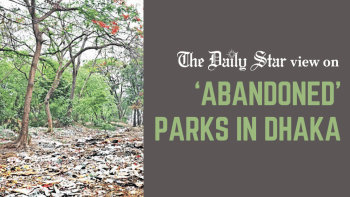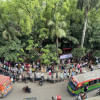Stop concretising our parks

After having gone through some of the most punishing summer days on record not long ago, do we need any more incentive to stop what's causing this "man-made" heatwave? Apparently, we do, unbelievable as it may seem. A recent report by Prothom Alo shows how – far from dialling back – those in charge are still encouraging mindless concretisation leading to continued depletion of green spaces, further warming our cities.
The report is on a park in Chattogram city where, according to a survey, a staggering 55 percent of its space is covered with concrete infrastructure, blatantly violating building regulations that restrict concrete usage to no more than 5 percent of park space. The Biplab Udyan is under the city corporation, but leased out to two private firms who are largely responsible for its current plight. Its central area is filled with rows of food stores and seating arrangements, all made of concrete. Also, a large part of the park is surrounded by bamboo fences and thus off limits to visitors. They can stroll through the walkways, but those too are made of concrete, as are the benches. There is little sign of greenery in an area that is supposed to be full of it.
It is safe to assume that most parks in our cities – there are not many left – are more or less in a similar state, with commercial interests and lack of care and awareness turning them into concrete-laden landscapes. Green spaces like parks and playgrounds are important for relaxation, recreation, and communal gathering. They are also crucial for controlling temperature in a city. But in our blind pursuit of development, we are destroying not just these urban oases but also our future as a species. This is as true in Chattogram as in other large cities including Dhaka, where, in DNCC alone, green areas have shrunk 66 percent over the last three decades.
The authorities must reverse this trend. They must stop commercialisation and concretisation of our parks, and take steps to improve the overall coverage of green spaces in our cities.


 For all latest news, follow The Daily Star's Google News channel.
For all latest news, follow The Daily Star's Google News channel. 









Comments